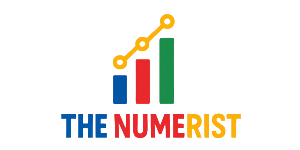TECH
Smart Software, Smarter Solutions

Smart Software, Smarter Solutions: Empowering the Digital Era
In an age where every industry is rapidly digitizing, businesses and individuals alike are seeking more efficient ways to solve problems, enhance productivity, and scale operations. Smart software, smarter solutions has become more than just a slogan—it’s a principle guiding the evolution of modern technology. From intelligent automation to predictive analytics, today’s software is designed not just to work—but to think, learn, and optimize.
The Evolution of Software: From Static Tools to Intelligent Systems
Software has come a long way since the early days of basic applications and operating systems. Originally developed to perform predefined tasks like word processing or accounting, modern software now integrates complex logic, user behavior tracking, and adaptive algorithms to anticipate and respond to user needs in real time.

The shift from desktop-based programs to cloud computing platforms like Microsoft Azure, Google Cloud, and Amazon Web Services (AWS) has enabled users to access services from anywhere, anytime. This level of software scalability and flexibility has revolutionized industries ranging from healthcare and finance to logistics and education.
AI and Machine Learning: Making Software Smarter
At the core of this smart revolution are artificial intelligence (AI) and machine learning (ML)—technologies that allow software to analyze data, learn patterns, and make decisions without explicit human programming. Tools like Salesforce Einstein, IBM Watson, and Google AI enable businesses to gain deep insights, automate processes, and deliver personalized experiences.

For example, AI-driven CRMs can predict customer behavior and recommend the next best action for sales reps. Chatbots powered by natural language processing (NLP) enhance customer support by providing accurate, context-aware answers instantly. This shift not only improves operational efficiency but also elevates user engagement and satisfaction.
Integration and Automation: Streamlining Business Processes
One of the hallmarks of intelligent software is its ability to integrate with other platforms and automate routine tasks. API connectivity allows different systems—like inventory management, e-commerce platforms, and accounting software—to communicate seamlessly.
Automation tools like Zapier, UiPath, and Power Automate empower organizations to eliminate manual workflows. From sending automatic invoices to syncing data across platforms, software-driven automation reduces human error and frees up valuable time for high-level tasks.
Even in small businesses, this translates into increased efficiency, reduced overhead, and faster customer service.
Customization, Flexibility, and User-Centric Design
As businesses become more complex, the need for customizable software solutions is growing. Today’s platforms often include drag-and-drop interfaces, modular plugins, and customizable dashboards that allow users to tailor the software to specific workflows.
No-code and low-code development tools like Airtable, OutSystems, and Bubble are enabling non-developers to create and deploy applications without writing a single line of code. These platforms democratize innovation, making it possible for anyone with an idea to build and launch a tech solution.
Moreover, user experience (UX) and user interface (UI) design play a vital role in adoption rates. Modern software is not just functional—it’s intuitive, responsive, and mobile-friendly, ensuring it can be used efficiently across all devices and environments.
Security and Compliance in Modern Software Environments
As software becomes more intelligent and interconnected, the need for robust cybersecurity and compliance protocols is paramount. Whether it’s a SaaS CRM or an on-premise ERP, protecting data is non-negotiable.
Top platforms now come with built-in end-to-end encryption, role-based access control, and multi-factor authentication to safeguard sensitive information. Additionally, many enterprise applications comply with international standards like GDPR, HIPAA, or SOC 2, ensuring legal and ethical data handling.
Smart software not only prevents breaches but also detects anomalies through real-time monitoring and behavioral analysis, keeping organizations one step ahead of threats.
Analytics and Data-Driven Decision Making
Data is the backbone of any intelligent system. Modern software solutions collect, process, and visualize data in ways that provide instant insights for decision-makers. Platforms like Tableau, Power BI, and Looker transform raw data into actionable dashboards that help teams make informed choices.
Whether it’s identifying purchasing trends, monitoring website performance, or optimizing supply chains, business intelligence tools give leaders a clearer picture of their operations. Predictive analytics goes one step further, offering foresight into future trends, risks, and opportunities.
The Impact Across Industries
From tech startups to global enterprises, smart software is driving transformation across every sector:
- Healthcare: AI-powered diagnostic tools, telemedicine platforms, and EHR systems improve patient care.
- Retail: Inventory automation, customer segmentation, and recommendation engines boost sales and satisfaction.
- Education: eLearning platforms use adaptive learning algorithms to personalize student experiences.
- Manufacturing: Smart factories employ IoT sensors and predictive maintenance systems for greater efficiency.
- Finance: Robo-advisors, fraud detection tools, and blockchain integrations streamline operations.
Regardless of industry, the unifying theme is this: smarter solutions powered by smart software lead to better outcomes.
Frequently Asked Questions (FAQs)
Q: What makes software “smart”?
A: Smart software typically incorporates artificial intelligence, automation, and data analytics to adapt to user needs, make predictions, and improve over time.
Q: Is smart software only for large businesses?
A: Not at all. Many SaaS platforms and low-code tools are specifically designed to help small and mid-sized businesses scale affordably and efficiently.
Q: How do I know if a software solution is secure?
A: Look for features like end-to-end encryption, two-factor authentication, GDPR compliance, and regular security audits.
Q: Can I build my own software without coding knowledge?
A: Yes. No-code and low-code platforms like Bubble, Glide, and Adalo allow users to create custom applications without traditional programming skills.
Q: What is the role of APIs in smart software?
A: APIs (Application Programming Interfaces) allow different software systems to communicate, enabling automation, integration, and extended functionality.
Conclusion
As digital transformation becomes a necessity rather than a luxury, the phrase “Smart Software, Smarter Solutions” captures the essence of modern innovation. From AI-driven decision-making to automation and integration, intelligent software has redefined how we live, work, and grow.
TECH
TechAndGameDaze: Where Innovation Meets Interactive Play

TechAndGameDaze: Where Innovation Meets Interactive Play
TechAndGameDaze: Where Innovation Meets Interactive Play has emerged as a unique online destination that merges the worlds of technology and gaming into a seamless user experience. This rapidly growing platform is more than just a blog—it’s a dynamic intersection of cutting-edge tech updates, in-depth product reviews, thought-provoking analysis, and immersive gaming insights.
The Evolution of Tech and Gaming Journalism
The modern tech and gaming enthusiast expects more than regurgitated press releases. They crave content that’s insightful, timely, and tailored to their needs. TechAndGameDaze fills that gap by offering readers a curated blend of informative news and hands-on experience. Whether it’s exploring the latest developments in artificial intelligence
A Hub for Thoughtful Reviews and First-Hand Impressions
One of the defining features of TechAndGameDaze is its dedication to genuine, first-hand reviews. Rather than relying on surface-level opinions, the platform dives deep into the user experience. Whether it’s evaluating the thermals on a new graphics card or analyzing the frame rate on a just-released PlayStation 5 title, the reviews are data-driven yet humanized. Readers are given real-world insight into how a product performs, not just how it’s marketed.
Tutorials, How-Tos, and DIY for the Curious Mind
Beyond reviews and news, TechAndGameDaze has earned its reputation through educational content. Many readers come to the platform to learn something specific—how to overclock their GPU safely, how to optimize a Steam Deck for indie games, or how to set up a dual-monitor workstation for both work and play. The tutorials are written in a tone that is friendly but never condescending, empowering users with the confidence to solve problems on their own.
The rise of DIY culture in the tech space, especially around custom PC building and Raspberry Pi projects, is echoed across many posts. These guides are often supplemented with images, benchmark comparisons, and downloadable tools—making them incredibly useful for anyone who wants to take control of their tech life.
Gaming News, eSports, and Industry Commentary
The gaming industry evolves at a breakneck pace, and TechAndGameDaze ensures its readers stay ahead of the curve. Regular updates cover everything from surprise indie hits to blockbuster releases like Elden Ring, Starfield, and the next big Call of Duty title. eSports fans aren’t left behind either.
The Community-Driven Edge
While many tech and gaming websites focus only on publishing content, TechAndGameDaze also emphasizes interaction. Readers are encouraged to share their experiences, voice their opinions, and even contribute guest posts. The comment sections often become mini forums where discussions unfold about everything from GPU shortages to game lore theories.
Cross-Platform Accessibility and Design
TechAndGameDaze has been optimized for desktop, tablet, and mobile viewing. This means users can read a detailed article about graphics card architecture while sitting at their gaming rig, or watch a console game review from their smartphone during a morning commute.
FAQs About TechAndGameDaze
Q1: What kind of content can I find on TechAndGameDaze?
You’ll find product reviews, gaming news, hardware tutorials, eSports coverage, opinion pieces, and educational tech guides.
Q2: Is TechAndGameDaze suitable for beginners?
Yes. While it offers advanced content for experienced users, many tutorials and reviews are beginner-friendly and include clear explanations.
Q3: Does TechAndGameDaze review both AAA and indie games?
Absolutely. The platform covers a wide spectrum—from blockbuster releases to lesser-known indie gems.
Q4: Are the reviews sponsored?
The site emphasizes transparency. Sponsored content is clearly disclosed, and most reviews are based on hands-on testing and independent assessment.
Q5: Is there a way to contribute content or guest post?
Yes, TechAndGameDaze welcomes community contributions and offers a structured submission process for guest writers.
Q6: Does TechAndGameDaze have a YouTube or podcast channel?
Yes. The platform is expanding into video and audio formats with reviews, discussions, and tutorials.
Conclusion
In an industry where attention spans are short and content is often recycled, TechAndGameDaze: Where Innovation Meets Interactive Play stands out by offering authenticity, depth, and community.
TECH
MyWape: Your Portal to Seamless Digital Access

MyWape: Your Portal to Seamless Digital Access in the Modern Academic World
In today’s fast-paced educational environment, digital solutions are not just a luxury—they’re a necessity.
MyWape: Your Portal to Seamless Digital Access has emerged as one of the most intuitive and efficient platforms for managing academic responsibilities online. Designed with both students and educators in mind, this powerful online education portal streamlines everything from class schedules to course materials, exam results, and communication with faculty.
As institutions continue transitioning into hybrid and digital learning formats, tools like this are transforming how education is delivered, accessed, and experienced.
The Evolution of Academic Portals and the Rise of User-Centric Platforms
Over the past decade, academic institutions have increasingly adopted learning management systems (LMS) to better handle course registration, grading, and digital content delivery. While traditional portals often felt clunky or outdated, the new wave of user-centric platforms—like the one offered by Wape College or affiliated educational bodies—provides a sleek, responsive interface that works equally well on desktops, tablets, and smartphones.
Students are no longer bound to campus libraries or waiting in long administrative queues. From enrolling in classes to checking grades, submitting assignments, or connecting with faculty, everything can be accessed through a secure and personalized online account. The digital transformation of education isn’t just about convenience—it’s about creating inclusive, streamlined environments where students can focus on learning instead of logistics.
What Makes This Portal Different?
Unlike many other education portals that focus only on one aspect of academic life, this platform takes a holistic approach. Once a user logs into their account, they’re presented with a dashboard that centralizes all essential tools. Timetables, recent announcements, financial records, and even interactive forums are all available in one place. This design minimizes distractions and saves time for students juggling multiple courses and extracurricular commitments.
The portal is compatible with most modern browsers and optimized for low-bandwidth usage, which is a game-changer for students in remote or underserved regions. Moreover, the platform includes secure login protocols, encrypted communication channels, and data backup systems to ensure user privacy and continuity of access.
Digital Learning and Real-Time Connectivity
In an era where virtual classrooms are becoming increasingly prevalent, the platform provides built-in tools for real-time engagement. Students can attend live video lectures, participate in discussion boards, and download lecture notes—all within the same ecosystem. Educators, in turn, can upload course materials, manage assessments, and even conduct quizzes or polls in real time.
For many students, this level of connectivity significantly improves academic performance. Having all academic data in one place means less time is spent searching through emails or multiple websites. More importantly, the ability to access learning materials 24/7 empowers learners to study at their own pace and convenience.
Course Management Simplified
Navigating through course registration, schedule changes, or exam information can often be overwhelming—especially at the beginning of a semester. The platform simplifies these processes with automated workflows and smart reminders. Whether it’s adding a new elective, tracking credit hours, or downloading an exam schedule, everything is clearly labeled and user-friendly.
The system also helps in preventing common administrative mistakes. For example, if a student tries to enroll in overlapping classes, the portal generates real-time conflict alerts. This ensures that students make informed decisions and avoid unnecessary delays in their academic journey.
Accessibility and Mobile Compatibility
One of the strongest features of this portal is its mobile responsiveness. Whether using an Android device, iPhone, or tablet, users can access their accounts on the go. This is especially helpful for students who commute or work part-time and need flexible access to their academic information.
The mobile interface mirrors the desktop version in terms of layout and function, allowing students to attend virtual lectures, view grades, submit assignments, and interact with peers from anywhere. Notifications about upcoming deadlines or newly uploaded materials can also be pushed directly to the user’s device, helping them stay on track effortlessly.
Data Security and User Support
In any digital platform, data security is a top priority. The system uses multi-layer authentication to ensure that only authorized users can access personal and academic information. Regular system audits and updates ensure compliance with global data protection standards such as GDPR and FERPA.
In addition, users who experience login issues or have trouble navigating the portal can reach out to the helpdesk through live chat, email, or phone support. There is also a detailed knowledge base within the dashboard, which offers step-by-step guides, video tutorials, and answers to common troubleshooting questions.
Empowering Educators and Administrators
While the platform offers a range of tools for students, it’s equally valuable for faculty and administrators. Professors can easily manage course rosters, grade assignments, and post announcements. Administrative staff can generate reports, track academic progress, and communicate with students directly through the internal messaging system.
These functionalities not only reduce paperwork but also improve communication and transparency across departments. Faculty can spend more time focusing on teaching and mentorship, while students benefit from faster feedback and clearer academic expectations.
FAQs About MyWape
Q1: Is the portal free to use for students?
Yes, access is provided as part of enrollment in participating institutions. Students do not need to pay separately to use the platform.
Q2: Can I reset my password if I forget it?
Absolutely. There’s a “Forgot Password” feature on the login page, and users can follow the prompts to recover access securely via email or phone number.
Q3: Does the portal support assignment uploads?
Yes, students can upload assignments in various formats including PDF, Word, and multimedia files, depending on course requirements.
Q4: Can I view my academic history?
The portal provides access to detailed academic transcripts, performance trends, and course completion records under the “My Records” section.
Q5: Is there a mobile app available?
A mobile-optimized version of the site is accessible via browser. Some institutions may also offer a downloadable app for enhanced push notifications and offline features.
Q6: How do I contact tech support?
A helpdesk section is available on the homepage with options to chat live, email a query, or request a callback.
Conclusion
In a time where digital fluency is essential for academic success, platforms like MyWape: Your Portal to Seamless Digital Access are more than just tools—they are enablers of opportunity. By centralizing core educational functions into a single, user-friendly environment, this system empowers students, faculty, and administrators alike. With features like real-time course access, mobile compatibility, and robust support, it sets a new benchmark for how modern education should function.
-

 EDUCATION2 days ago
EDUCATION2 days agoHorizontal Translation: How to Shift Graphs
-

 EDUCATION3 days ago
EDUCATION3 days agoUsing the Quadratic Formula
-

 EDUCATION3 days ago
EDUCATION3 days agoStretching Graphs and Compressing Graphs
-

 EDUCATION3 days ago
EDUCATION3 days agoWhy Does m Represent Slope?
-

 EDUCATION2 days ago
EDUCATION2 days agoTrigonometry – Secant, Cosecant, Cotangent
-

 EDUCATION3 days ago
EDUCATION3 days agoHow to Solve Quadratic Equations 2
-

 TECH2 days ago
TECH2 days agoMyWape: Your Portal to Seamless Digital Access
-

 TECH2 days ago
TECH2 days agoTechAndGameDaze: Where Innovation Meets Interactive Play
